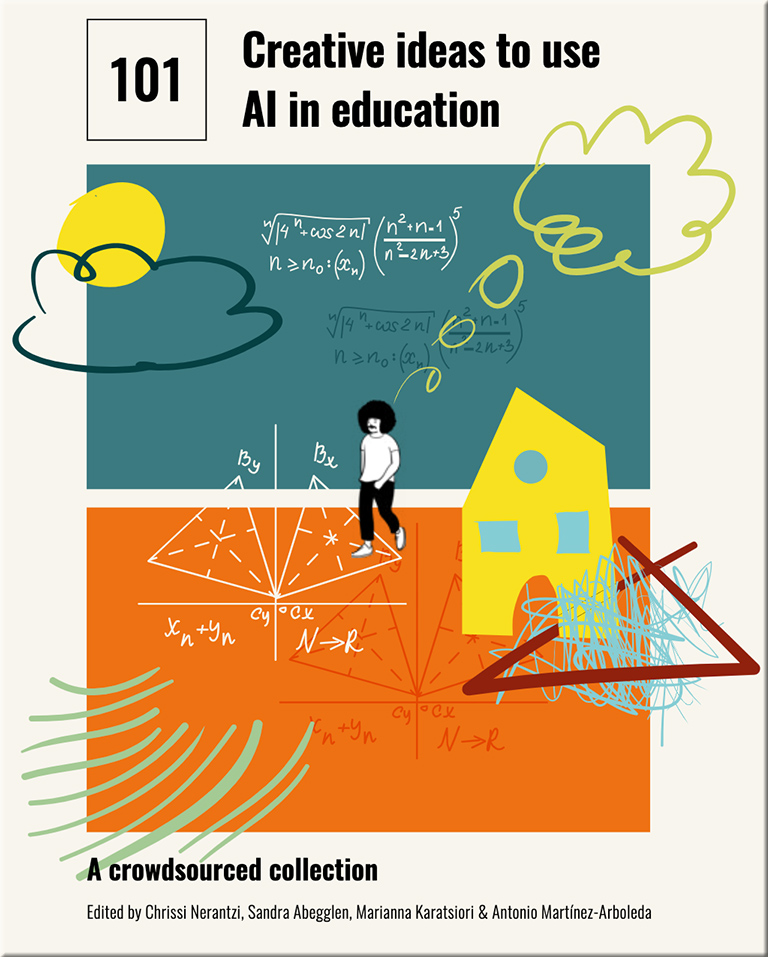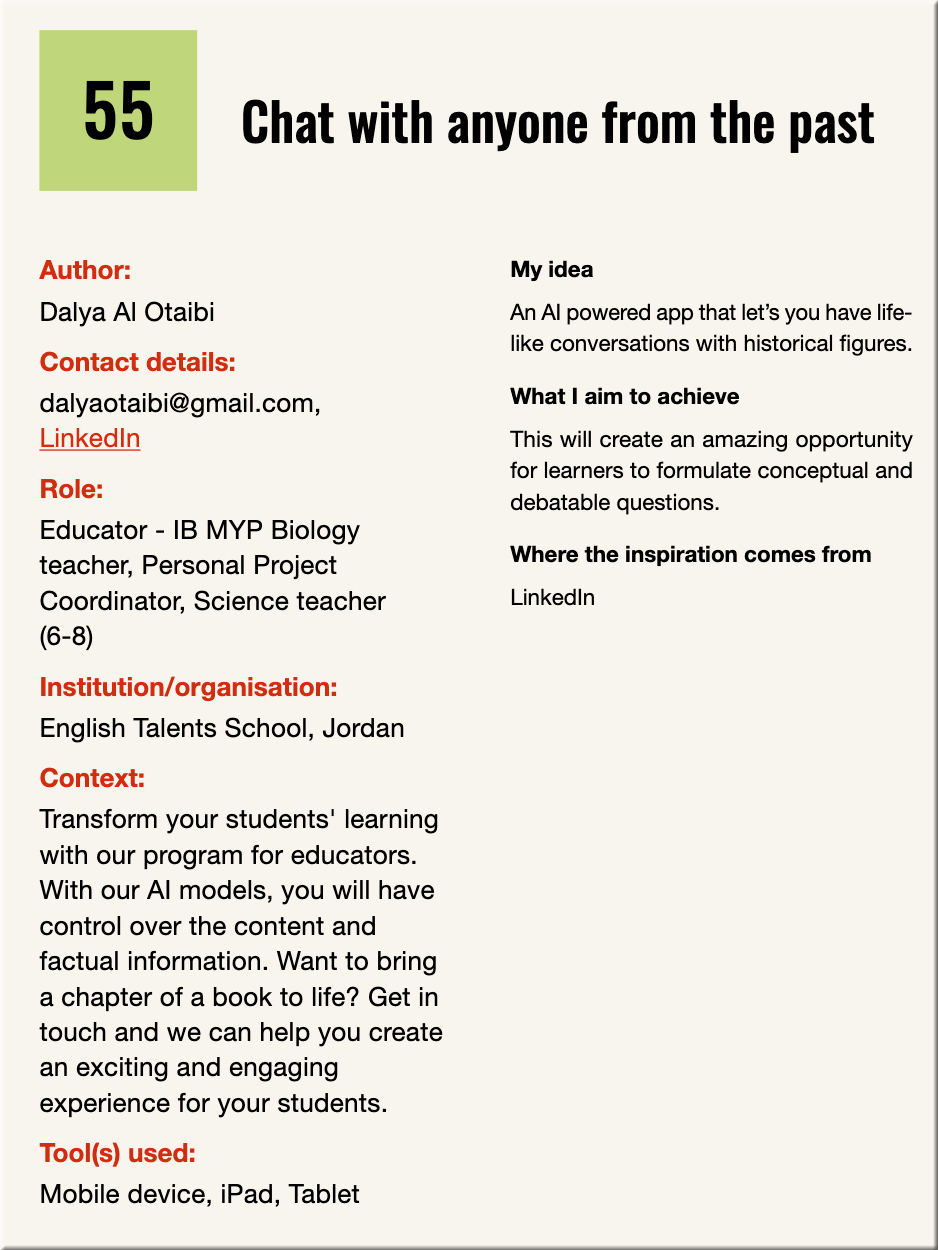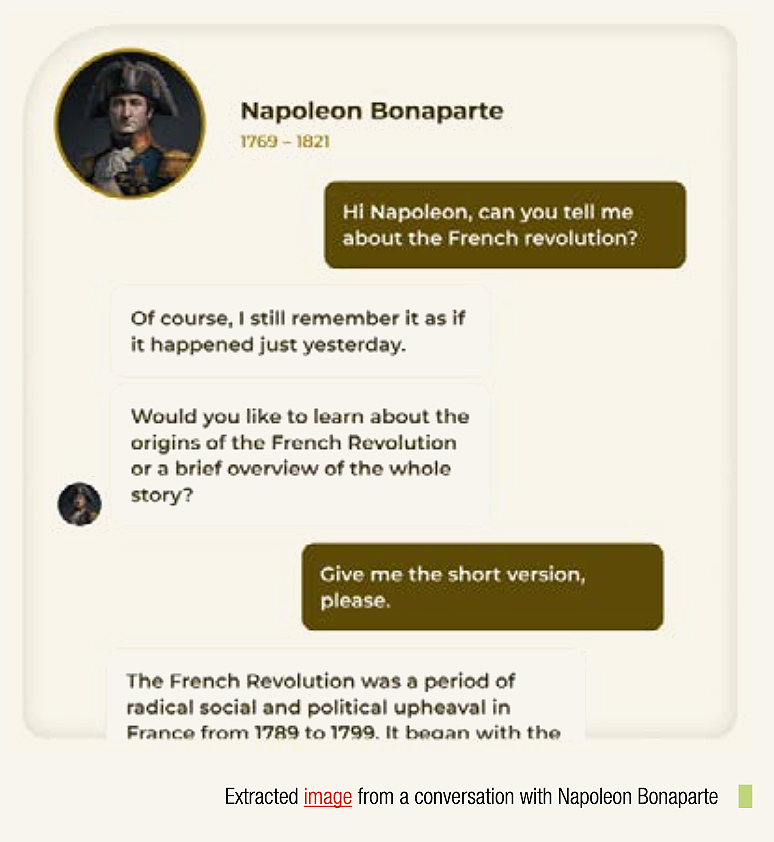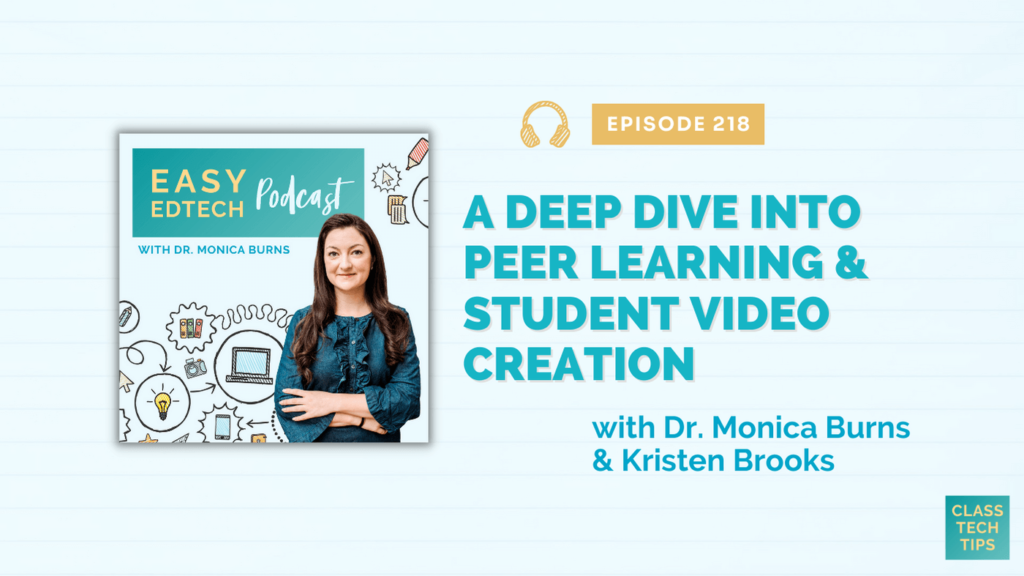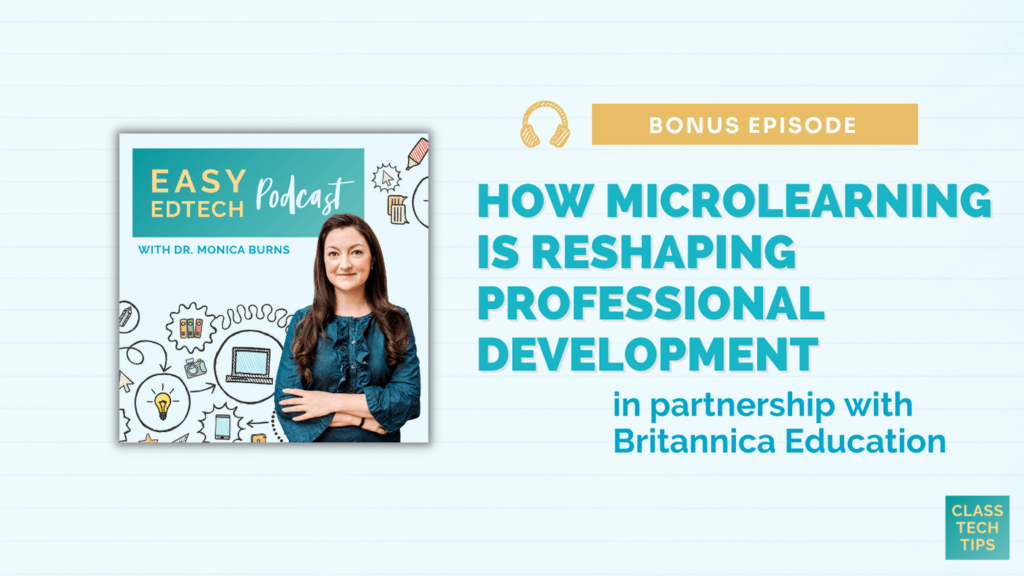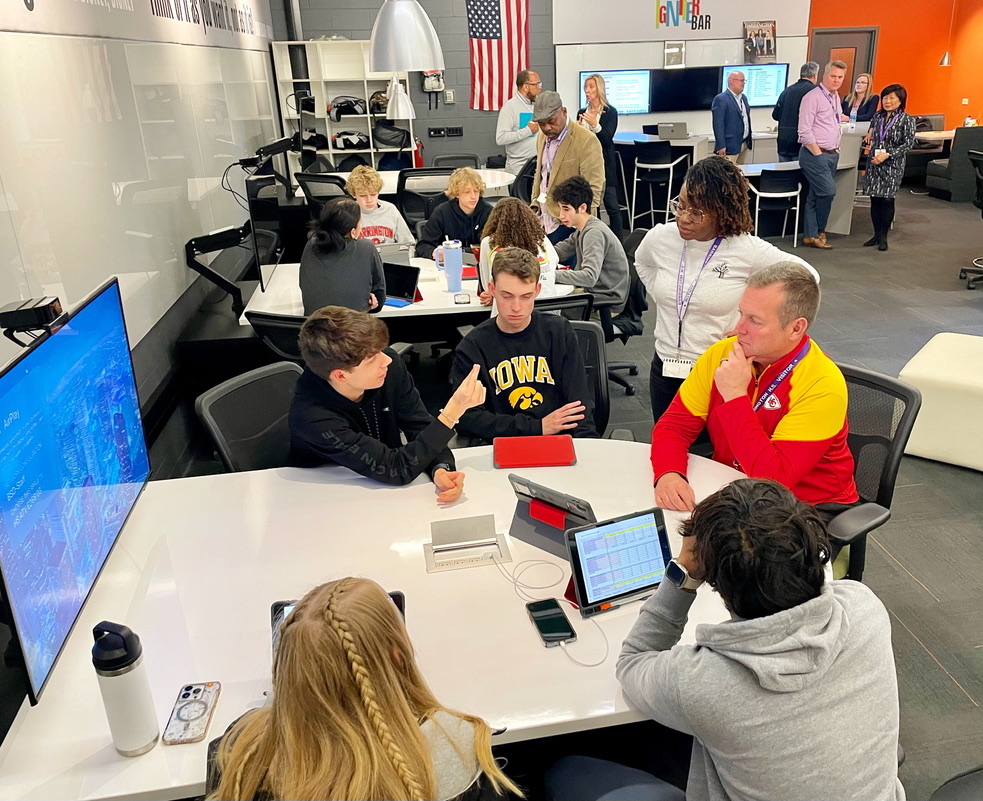Peanuts Sing Roundabout — from theawesomer.com; I hadn’t seen this yet…so for those of my generation, you might like this as well! 🙂
How Schools Can Use Cultural Performing Arts to Reimagine Community-Engaged Learning — from edsurge.com by Christopher Sandoval
Excerpt:
My experience has taught me that if students do not believe their school is invested in activities and programs that reflect their community and culture, they will not feel a sense of belonging in the classroom, which will negatively impact student engagement and their ability to understand and appreciate cultural differences among one another.
Unfortunately, not every school believes the performing arts are worth the investment; if anything, the trend of school funding in the performing arts has been in sharp decline for some time. While student engagement continues to be a significant issue for classrooms across the country, I believe the performing arts can be an opportunity for schools to reimagine community engagement in schools and get students back on track.
101 creative ideas to use AI in education, A crowdsourced collection — from zenodo.org by Chrissi Nerantzi, Sandra Abegglen, Marianna Karatsiori, & Antonio Martínez-Arboleda (Eds.); with thanks to George Veletsianos for this resource
As an example, here’s one of the ideas from the crowdsourced collection:
On a somewhat related note, also see:
Merlyn Mind launches education-focused LLMs for classroom integration of generative AI — from venturebeat.com by Victor Dey
Excerpt:
Merlyn Mind, an AI-powered digital assistant platform, announced the launch of a suite of large language models (LLMs) specifically tailored for the education sector under an open-source license.
Designing courses in an age of AI — from teachinginhighered.com by Maria Andersen
Maria Andersen shares about designing courses in an age of artificial intelligence (AI) on episode 469 of the Teaching in Higher Ed podcast.
With generative AI, we have an incredible acceleration of change happening.
Maria Andersen
DC: This is the type of thing that might impact the interface design of future #AI related applications. If so, our current efforts to refine prompts may have a shorter lifespan that we expected.https://t.co/MuNMf2kGwL
— Daniel Christian (he/him/his) (@dchristian5) June 26, 2023
After 20 years as a classroom teacher & senior leader, I've collated lists of all the best stories and non-fiction I've bought, bookmarked or reviewed in my career and put together this collection of recommended books for children: from EYFS to KS5. https://t.co/8tGflWVXKS
— Tom Tolkien (@tomtolkien) March 13, 2023
Teaching With Music: 5 Tips for Using it With Any Subject — from by Erik Ofgang
Tips for teaching with music as a helpful learning tool regardless of the subject from school social worker Sherena Small
Excerpt:
Teaching with music can enhance learning in almost any subject area, says Sherena Small, a school social worker at Champaign Unit 4 School District in Illinois.
“It’s just such a good way to enhance what kids are learning,” says Small, who uses hip-hop and other music to teach social-emotional learning skills, including empathy and active listening. Earlier this year, Nearpod recognized Small as an Educator of the Year for her innovative efforts using Nearpod’s Flocabulary tool to incorporate music into class.
Speaking of multimedia, also see:
And here’s another interesting item from Dr. Burns:
Apple’s $3,499 Vision Pro AR headset is finally here — from techcrunch.com by Brian Heater
Image Credits: Apple
Excerpts:
“With Vision Pro, you’re no longer limited by a display,” Apple CEO Tim Cook said, introducing the new headset at WWDC 2023. Unlike earlier mixed reality reports, the system is far more focused on augmented reality than virtual. The company refresh to this new paradigm is “spatial computing.”
Reflections from Scott Belsky re: the Vision Pro — from implications.com
Apple WWDC 2023: Everything announced from the Apple Vision Pro to iOS 17, MacBook Air and more — from techcrunch.com by Christine Hall
Apple unveils new tech — from therundown.ai (The Rundown)
Here were the biggest things announced:
- A 15” Macbook Air, now the thinnest 15’ laptop available
- The new Mac Pro workstation, presumably a billion dollars
- M2 Ultra, Apple’s new super chip
- NameDrop, an AirDrop-integrated data-sharing feature allowing users to share contact info just by bringing their phones together
- Journal, an ML-powered personalized journalling app
- Standby, turning your iPhone into a nightstand alarm clock
- A new, AI-powered update to autocorrect (finally)
- Apple Vision Pro
Apple announces AR/VR headset called Vision Pro — from joinsuperhuman.ai by Zain Kahn
Excerpt:
“This is the first Apple product you look through and not at.” – Tim Cook
And with those famous words, Apple announced a new era of consumer tech.
Apple’s new headset will operate on VisionOS – its new operating system – and will work with existing iOS and iPad apps. The new OS is created specifically for spatial computing — the blend of digital content into real space.
Vision Pro is controlled through hand gestures, eye movements and your voice (parts of it assisted by AI). You can use apps, change their size, capture photos and videos and more.
From DSC:
Time will tell what happens with this new operating system and with this type of platform. I’m impressed with the engineering — as Apple wants me to be — but I doubt that this will become mainstream for quite some time yet. Also, I wonder what Steve Jobs would think of this…? Would he say that people would be willing to wear this headset (for long? at all?)? What about Jony Ive?
I’m sure the offered experiences will be excellent. But I won’t be buying one, as it’s waaaaaaaaay too expensive.
Changed by Our Journey: Engaging Students through Simulive Learning — from er.educause.edu by Lisa Lenze and Megan Costello
In this article, an instructor explains how she took an alternative approach to teaching—simulive learning—and discusses the benefits that have extended to her in-person classrooms.
Excerpts:
Mustering courage, Costello devised a novel way to (1) share the course at times other than when it was regularly scheduled and (2) fully engage with her students in the chat channel during the scheduled class meeting time. Her solution, which she calls simulive learning, required her to record her lectures and watch them with her students. (Courageous, indeed!)
Below, Costello and I discuss what simulive learning looks like, how it works, and how Costello has taken her version of remote synchronous teaching forward into current semesters.
Megan Costello: I took a different approach to remote synchronous online learning at the start of the pandemic. Instead of using traditional videoconferencing software to hold class, I prerecorded, edited, and uploaded videos of my lectures to a streaming website. This website allowed me to specify a time and date to broadcast my lectures to my students. Because the lectures were already prepared, I could watch and participate in the chat with my students as we encountered the materials together during the scheduled class time. I drove conversations in chat, asked questions, and got students engaged as we covered materials for the day. The students had my full attention.
NVIDIA ACE for Games is a new foundry for intelligent in-game characters powered by generative AI. Developers of middleware, tools, and games can use NVIDIA ACE for Games to build and deploy customized speech, conversation, and animation AI models in their software and games.
From DSC:
I can’t wait to see this type of thing integrated into educational games/simulations/training.
Below comments/notes are from DSC (with thanks to Roberto Ferraro for this resource):
according to Dan Pink, intrinsic motivation is very powerful — much more powerful for many types of “messy/unclear” cognitive work (vs. clear, more mechanical types of work). What’s involved here according to Pink? Autonomy, mastery, and purpose.
Dan Pink makes his case in the video below. My question is:
- If this is true, how might this be applied to education/training/lifelong learning?
From DSC (cont’d):
As Dan mentions, we each know this to be true. For example, for each of our kids, my wife and I introduced them to a variety of things — music, sports, art, etc. We kept waiting for them to discover which thing(s) that THEY wanted to pursue. Perhaps we’ll find out that this was the wrong thing to do. but according to Pink, it’s aligned with the type of energy and productivity that gets released when we pursue something that we want to pursue. Plus creativity flows in this type of setting.
Again, my thanks to Roberto Ferraro for resurfacing this item as his “One ‘must read’ for this week” item of his newsletter.

Red Sox Turn Fenway Park into “Learning Lab” for Boston 6th Graders — from by Ira Stoll
“The key to unlock opportunity is education and hard work,” students are told at launch event
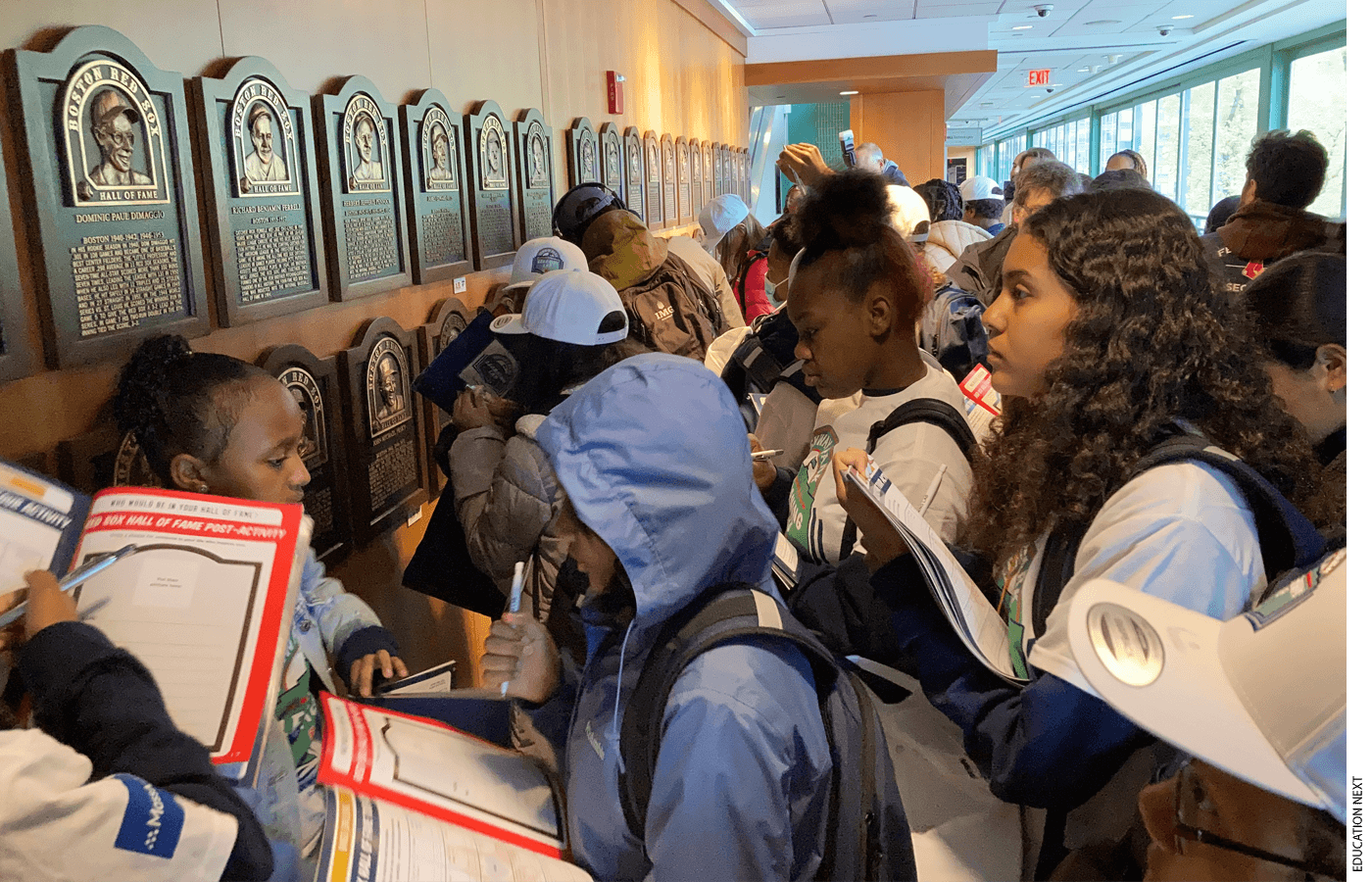
Students from the 6th grade at Nathan Hale School complete a “bingo challenge” as part of the Red Sox Hall of Fame stop on their guided tour of the Fenway Park Learning Lab.
Excerpt:
The six-stop tour has students learning history, geography, math, and science. Student visitors get baseball caps, t-shirts, and a backpack full of other souvenir items like baseball cards, binoculars, a calculator, and a pen. The most important piece of equipment may be a 40-page, seriously substantive workbook, developed with the Boston Public Schools, that students work their way through along the hourlong guided tour.
From DSC:
Very interesting.
Being a new teacher is hard. Having a good mentor can help — from npr.org by Cory Turner
Excerpt:
[Besides this article’s focus on mentorship]
In March, I reported a pair of stories from Jackson, Miss., where the school district is paying for unlicensed classroom aides to go back to school and get their master’s degrees.
In April, I told the story of a remarkable idea: A new high school in San Antonio dedicated entirely to training high-schoolers in the art and science of good teaching.
From DSC:
I would add a few more items:
- Significantly reduce the impact of legislators on K-12. If they do vote on something that would impact schools, each legislator that votes on such legislation must first spend at least ___ week(s) observing in some of the schools that would be impacted before even starting to draft legislation and/or debate on the topic(s).
- Instead, turn over more control and power to the students, teachers, K12 administrators, parents, and school boards.
- Provide more choice, more control as each student can handle it.
- Stop the one-size fits all system. Instead use AI-based systems to provide more personalized learning.
- Develop more hybrid programs — but this time I’m talking mixing what we’ve known as public education with homeschooling and smaller learning pods. Let’s expand what’s included when we discuss “learning spaces.”
- Strive for a love of learning — vs. competition and developing gameplayers
- Support makerspaces, entrepreneurship, and experiments
- Speaking of experiments, I would recommend developing more bold experiments outside of the current systems.
Along the lines of potential solutions/visions, see:
Why ‘System Transformation’ Is Likely A Pipe Dream — from michaelbhorn.substack.com by Michael Horn
But I’m for System Replacement
Excerpt:
Foremost among them is this: Despite all the fancy models and white papers around what are all the levers to pull in order to transform a system, system transformation almost never happens by changing the fundamental tenets of the system itself. Instead, it comes from replacing the system with a brand-new system.
To start to understand why, consider the complicated system in which public schools find themselves. As Thomas Arnett explained, they are one part of a vast value network of federal, state, and local regulators, voters and taxpayers, parents and students, teachers, administrators, unions, curriculum providers, school vendors, public infrastructure, higher education institutions, and more.
New ideas, programs, or entities that don’t fit into these processes, priorities, and cost structures are simply not plug-compatible into that value network. They consequently get rejected, tossed to the fringe, or altered to meet the needs of the existing actors in the value network.
I’m a Student. You Have No Idea How Much We’re Using ChatGPT. — from chronicle.com by
Excerpt:
There’s a remarkable disconnect between how professors and administrators think students use generative AI on written work and how we actually use it. Many assume that if an essay is written with the help of ChatGPT, there will be some sort of evidence — it will have a distinctive “voice,” it won’t make very complex arguments, or it will be written in a way that AI-detection programs will pick up on. Those are dangerous misconceptions. In reality, it’s very easy to use AI to do the lion’s share of the thinking while still submitting work that looks like your own.
The common fear among teachers is that AI is actually writing our essays for us, but that isn’t what happens. You can hand ChatGPT a prompt and ask it for a finished product, but you’ll probably get an essay with a very general claim, middle-school-level sentence structure, and half as many words as you wanted. The more effective, and increasingly popular, strategy is to have the AI walk you through the writing process step by step.
.
From DSC:
The idea of personalized storytelling is highly intriguing to me. If you write a story for someone with their name and character in it, they will likely be even more engaged with the story/content. Our daughter recently did this with a substitute teacher, who she really wanted to thank before she left (for another assignment at another school). I thought it was very creative of her.
How Your Students are Using AI — from drphilippahardman.substack.com by Dr. Philippa Hardman
Excerpts:
Here’s are the five biggest lessons we’ve learned:
-
- Many students are already embracing AI in their day to day study
- Students need AI education, and fast.
- Students have a preference for free or low-cost alternatives to often expensive, paid-for services
- Students find value in personalised, dialogue-based learning experiences
- Ed Tech companies will need to evolve in order to survive.
.
Curricular Resources about AI for Teaching (CRAFT) — from craft.stanford.edu
A project from the Stanford Graduate School of Education
Excerpt:
We’re building resources to teach AI literacies for high school and college instructors and assembling them into a full curriculum that will be deployed in a course with the National Educational Equity Lab offered in Fall 2023.
.
AI video is getting insanely powerful.
Soon, you’ll be able to create a Hollywood-grade movie from your pocket.
Here’s the most breathtaking AI-generated videos I’ve seen:
— The AI Solopreneur (@aisolopreneur) May 11, 2023
ChatGPT has changed the world.
It does lack in some areas, but my favorite use case is leveraging it to teach me things twice as fast.
Here are the 10 best prompts to learn anything faster:
— Rowan Cheung (@rowancheung) May 11, 2023
Why I’m Excited About ChatGPT — from insidehighered.com by Jennie Young
Here are 10 ways ChatGPT will be a boon to first-year writing instruction, Jennie Young writes.
Excerpt:
But from my perspective as a first-year writing program director, I’m excited about how this emerging technology will help students from all kinds of educational backgrounds learn and focus on higher-order thinking skills faster. Here are 10 reasons I’m excited about ChatGPT.
? stfu and take my money
This is the most impressive campaign I’ve seen from a mega brand so far using AI & StableDiffusion.
Would love a breakdown of how this was all done.
— Linus (???) (@LinusEkenstam) May 12, 2023
edX Debuts Two AI-Powered Learning Assistants Built on ChatGPT — from press.edx.org; with thanks to Matthew Tower for this resource
edX plugin launches in ChatGPT plugin store to give users access to content and course discovery
edX Xpert delivers AI-powered learning and customer support within the edX platform
Excerpt:
LANHAM, Md. – May 12, 2023 – edX, a leading global online learning platform from 2U, Inc. (Nasdaq: TWOU), today announced the debut of two AI-powered innovations: the new edX plugin for ChatGPT and edX Xpert, an AI-powered learning assistant on the edX platform. Both tools leverage the technology of AI research and deployment company OpenAI to deliver real-time academic support and course discovery to help learners achieve their goals.
Inviting Learners into Work That Matters — from gettingsmart.com by Tom Vander Ark
Key Points
- We’ve found pockets of excellence in three dozen high school visits this spring.
- Where we’ve spotted evidence of deeper learning (i.e., engagement, critical thinking, excellent public products) it’s been work that matters to the learner and their community– it’s relevant, purposeful, and consequential work.
How to Continue Learning after College Graduation — from ivypanda.com; with thanks to Yvonne McQuarrie for this resource.
First, a brief note from DSC:
I publish this piece because I’m a firm believer that all of us are now into lifelong learning. Each of us needs to be intentional on enhancing our personal learning ecosystems.
Excerpt:
College graduation often becomes a turning point in students’ lives. Fear, confusion, and self-doubt often affect you at this time. They are likely to impact your interest and motivation for further study. To overcome this, you will have to adopt a lifelong learning mindset.
Our team wants to help you preserve your natural curiosity and interest in studies long after your college years are over. Below you will find reasons why lifelong learning matters and how it can help you live a fulfilling life.









